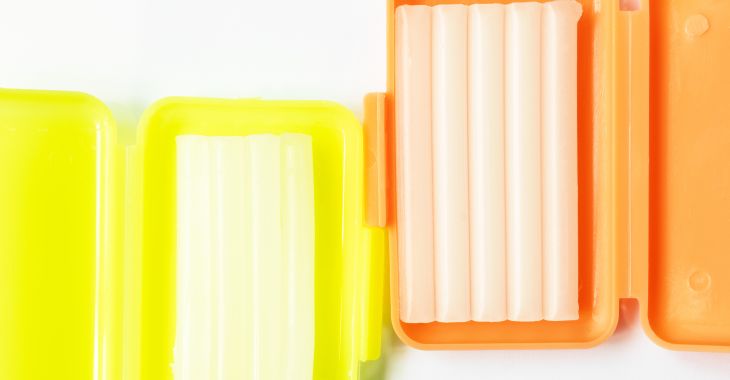Dental Wax Should You Use for Broken Tooth Repair?

Teeth are incredibly strong and can withstand extensive pressure, but they are still vulnerable to injury. Biting down on a hard item or sustaining a blow to the mouth can result in a broken tooth. While broken teeth do require dental care, you may be able to temporarily repair it with dental wax for broken tooth.
What Is Dental Wax?
If you had braces as a teenager, you probably are already familiar with dental wax. This substance is made from carnauba, paraffin or beeswax, and it is an inexpensive and safe option to add protection inside the mouth. For braces, it can be put over metal components to reduce rubbing or poking.
While tooth wax is commonly used in orthodontic treatment to reduce painful sores from metal wires and brackets, it can be used for other dental conditions. The dental wax can be used to fill in chips in the teeth or to cover sharp edges of broken teeth for a temporary solution to broken teeth injuries.
Why Use Dental Wax for Chipped Teeth?
When a tooth is chipped or broken, it is exposed and vulnerable to a variety of issues. Even a small chip can remove the protective enamel and allow bacteria access to the softer dentin underneath. Dental wax can be used as a temporary covering for broken and chipped teeth until it can be repaired.
The reason dental wax is commonly used for broken teeth is that it is accessible and affordable. You can buy it at most grocery or drug stores. This is convenient when it may be a few days or longer before you can receive dental work to repair your tooth. The application of softened dental wax can provide:
- Protection for the damaged tooth from decay or infection
- Restore a normal shape to the tooth
- Protect your tongue and soft tissues from sharp edges
- Minimize sensitivity to hot and cold
While dental wax can be used as a temporary fix for chipped and broken teeth, it is not a long term solution. The wax does not stay in place and bacteria can get under the wax into the tooth. It is meant to be used as a covering until you can see your dentist for a professional tooth repair with a filling, bonding or crown.
How to Use Dental Wax for a Broken Tooth
If you have a chipped or broken tooth that needs protection, you can purchase dental wax to give temporary relief. You can find teeth wax in most stores that carry health and beauty products in the oral health section by toothpastes, floss and toothbrushes. You can choose from flavored or unflavored varieties.
Before you use dental wax, you want to start with clean hands and teeth. Brush and flush your teeth thoroughly to remove bacteria – be careful around the damaged tooth, especially if it is broken. You also want to wash your hands with soap and water for 30 seconds to remove all bacteria before handling the wax.
If you are not sure how to use dental wax for broken tooth repair, follow the directions on the package carefully. In most cases, you can take a pea-sized ball of wax and warm it between your fingers to soften it. Once soft, press the wax over the sharp edges of your broken tooth until it stays in place.
Dental wax is not meant to be used for long periods. It should never be left in when eating – while it is safe to swallow, it will likely fall off when you chew anyway. Dental wax should be removed before eating, then clean your teeth and hands before adding a new piece of wax for protection.
How Long Can I Use Dental Wax for a Broken Tooth?
Ideally, dental wax should be only used for a day or two to cover the edges of a broken or chipped tooth. Constantly pressing wax on a broken tooth could lead to causing more damage, and it does not protect against decay or infection in the long run. It is only a temporary bandage for your tooth and to protect oral tissues.

Most chipped, cracked or broken teeth should be inspected and repaired as soon as possible by a dentist. Even if the tooth does not cause pain, it can be vulnerable to further damage due to the weakened structure or exposure to bacteria. Dental wax can be used while you wait for your dental appointment.
How long does dental wax last?
The lifespan of dental wax depends on various factors such as the type of wax used, the frequency of use, and the amount of pressure applied. Generally, dental wax can last for several days to a week before it needs to be replaced.
However, certain types of dental wax may last longer than others. For example, paraffin-based wax tends to last longer than natural wax, but it may be more difficult to mold and shape.
Patients who use dental wax frequently or apply more pressure on the wax may find that it wears down faster and needs to be replaced more often. Additionally, patients who consume certain foods or drinks that can melt the wax may also need to replace it more frequently.
How to remove wax from braces?
If you have braces and are experiencing discomfort or irritation from dental wax, you may need to remove the wax. Here are some steps you can follow to safely remove dental wax from braces:
- Wash your hands thoroughly with soap and water before touching your braces or mouth.
- Gently pull the wax away from your braces with your fingers. If the wax is hard or difficult to remove, you may need to use an object such as a toothbrush or dental pick to help pry it off.
- If the wax is still stuck to your braces, you can use dental floss to gently scrape it off. Be careful not to use too much force or pull too hard, as this can damage your braces or injure your mouth.
- After the wax has been removed, rinse your mouth with warm water to soothe any discomfort or irritation.
Now you know when and how to use dental wax for a broken tooth. Just remember that until your tooth is inspected and repaired by a dentist, it can still be vulnerable to decay, infection or further damage. Make an appointment for a tooth repair as quickly as possible if you have a broken tooth.
The information provided on this website, including text, graphics, images, and other materials, is intended solely for informational purposes and should not be used as a substitute for professional medical advice, diagnosis, or treatment.




)